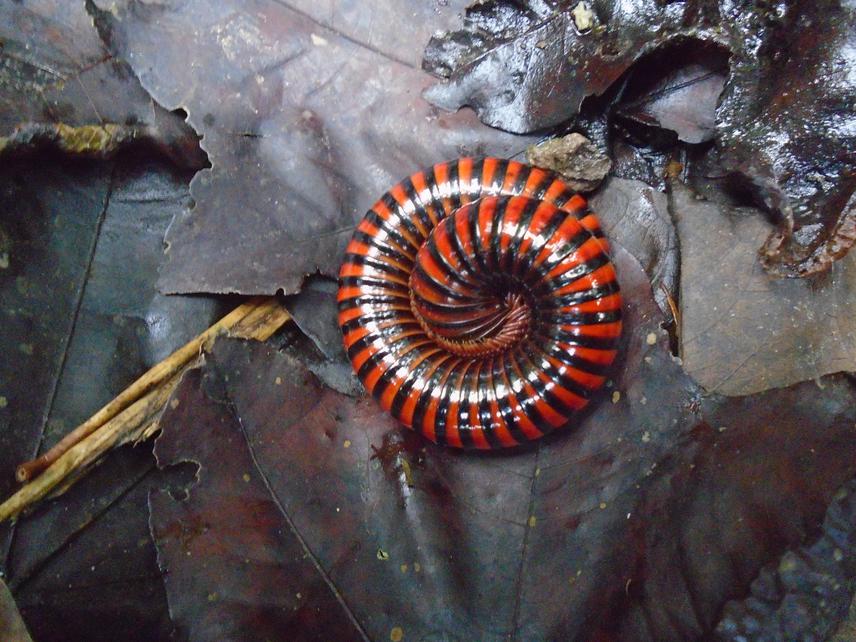Armand Richard Nzoko Fiemapong
Other projects
8 Jan 2020
Millipede Diversity, Distribution and Conservation Assessment in the Douala-Edea Wildlife Reserve, Cameroon
4 Mar 2022
Conservation of the Giant African Millipede Community in the Cameroon’s Rain-Forest Zones : Distribution, Threats and Research Needs
The aim of this study is to determine the impact of human activities on the diversity, community structure and conservation of millipedes in the Littoral forest of Cameroon.

Pachybolus excisus (Cook, 1897).
Conservation efforts to combat habitat fragmentation and land modification have focused primarily on large charismatic vertebrates, vascular plants, and economically valuable organisms, usually overlooking the bio-diverse and ecologically important groups of arthropods. In Afrotropical forest, invertebrates show a high level of both species richness and endemism, making it a conservation priority, yet much of the fauna remains unknown and undescribed. Although important in terms of taxonomic diversity, millipedes are mostly restricted to the tropics. Being largely forest-dwelling invertebrates, they are still quite poorly investigated, even though they play important roles in forest ecology and biodiversity. Among these important soil/litter fauna components, many species are endemic to Cameroon, many are poorly-known, while some are new to science. Given the pace of forest destruction, it is important to determine the impact of human activities on the diversity and community structure of millipedes in the rainforests of Cameroon.
The millipede fauna of the Cameroon forest region remains largely neglected, and the existing data provide no basis for making conservation decisions in this important hotspot of biodiversity. Generally, millipedes like most invertebrates greatly suffer in terms of interest in conservation and worldwide protection.
This study will provide baseline data on the structure of millipede communities to translate the level of anthropogenetic perturbation of the littoral forest of Cameroon. The diversity and distribution of millipedes will be studied in various landscapes with different levels of degradation.
We could also provide data on the perception and knowledge of the people of the study area on the impact of deforestation and its consequences on the ecosystems, and particularly on millipedes.
Based on our results we will point out species of millipedes, which are most affected by forest degradation and where is need to preserve their habitat. We will also develop and recommend a plan for biological monitoring of these forest ecosystems in this coastal region of Cameroon, which is less time consuming and involving less staff than this pilot project. The bio-monitoring will base on species of millipedes as bio-indicator for the level of forest degradation. All these actions will present a basic and important step using soil-invertebrates as bio-indicators in Cameroon. It could provide a tool and instrument for governmental and non-governmental organisations for nature-protecting actions for preserving and maintaining these species of animals and their ecosystem and thus contribute to their conservation.